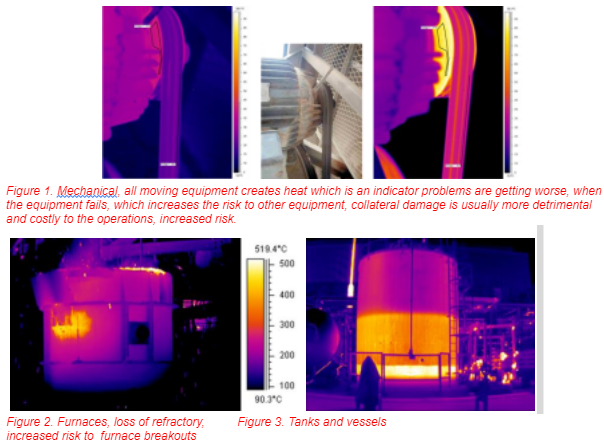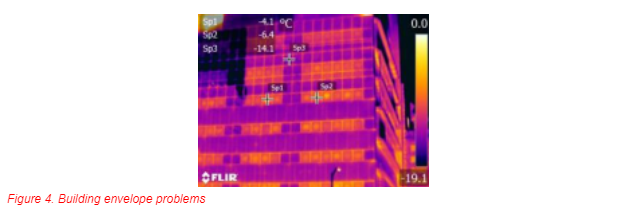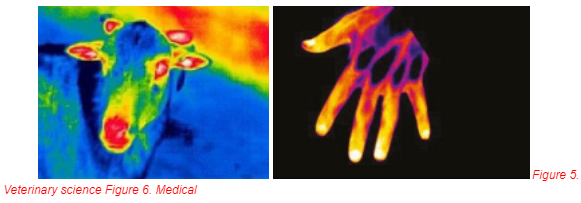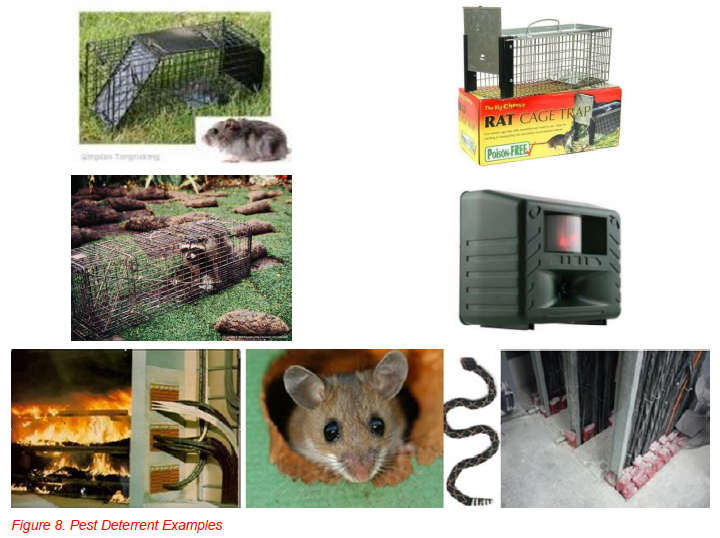Predictive Maintenance (Infrared) and Risk Management
InfraMation 2016 Application Paper Submission
Geoffrey Generalovic
Generals Predictive Services
ABSTRACT
This presentation will explore the following topics:
- What is Risk? A probability or threat of damage, injury, liability, loss, or any other negative occurrence that is caused by external or internal vulnerabilities, and that may be avoided through preemptive action.
- How does using infrared help you to avoid those risks?
WHAT IS RISK? Generals Predictive Services
A probability or threat of damage, injury, liability, loss, or any other negative occurrence that is caused by external or internal vulnerabilities, and that may be avoided through preemptive action.
STANDARDS IN TODAY’S WORKING WORLD CANADA, US, INTERNATIONAL
CSA Z462 – Workplace Electrical Safety (Canada)
- Hazard is the source of potential injury or damage to a worker’s health
- Risk is a combination of the likelihood and potential severity of that injury
NFPA 70E: Standard for Electrical Safety in the Workplace® (US)
Provisions encompass safety-related work practices, safety-related maintenance requirements, and safety requirements for special equipment. The Standard includes guidance for making hazard identification and risk assessments, selecting appropriate PPE, establishing an electrically safe work condition, and employee training.
Now there are international standards outlining how to assess and deal with risk, the first of the 3 outline Asset management, the next requirements needed to manage your assets and finally the guidelines to apply those systems.
ISO 55000 – Asset Management
Definition - An Asset is an item or entity that has potential or actual value to a an organization, it can be tangible or intangible, financial or non-financial.
Section 2.2 – Benefits of Asset Management
C) Managed Risk: reducing financial losses, improving health and safety, good will and reputation, minimizing environmental and social impact, can result in reduced liabilities such as insurance premiums, fines and penalties.
ISO 55001 – Asset Management - Management Systems Requirements
Lays out the requirements needed to start asset management.
ISO 55002 – Guidelines for the Application of ISO 55001
What is involved with the management of assets and the risks associated with that program, most importantly how do we develop a program to monitor the equipment to determine its condition, for this paper that would be the use of infrared.
ISO 31000 – Risk Management – Principles and Guidelines
Organizations face internal and external factors which influence whether they will achieve their objectives, this uncertainty is called risk. Organizations manage risk by identifying it, analyzing it and then evaluate what can be done to control that risk. This standard outlines the process.
Within these documents are the definitions of Competent or Qualified person.
Qualified is a person who has the skills and knowledge related to what he or she is doing and had the necessary training to avoid the hazards involved.
Competent:
- Having suitable or sufficient skill, knowledge, experience, etc., for some purpose.
- Adequate but not exceptional.
WHAT TO DO?
Risk assessment determines what the risks are:
- Which will identify the hazards
- Estimate the potential severity and likelihood of injury/harm
- Determine what, if any, protective measures are appropriate
- What tools can be employed to determine risk, infrared for example
The processes involved with the identification of hazards is outlined in NFPA70B in the USA or CSA Z463 in Canada.
HOW DOES USING INFRARED HELP YOU TO AVOID THOSE RISKS?
Predictive maintenance (PdM) techniques are designed to help determine the condition of in-service equipment in order to predict when maintenance should be performed. This approach promises cost savings over routine or time-based preventive maintenance, because tasks are performed only when warranted.
Using PdM minimizes Risk
1. Using your infrared camera routinely minimizes Risk or identifies areas where equipment is not running normally, fundamentally is it in a failed state, therefore a potential risk
2. Equipment Criticality would determine if it is scanned or not – high criticality, high cost of lost production – large risk
Most insurance companies require yearly inspections of all of your electrical equipment to reduce risk and minimize their need to pay costs
3. Yearly inspections of all high voltage equipment and all other critical electrical equipment identifies problems and reduces risk
- Starting from the incoming supply equipment, overhead lines, pole connections, supply transformers.
- Critical supply systems, overhead bus duct, compressors
- Electrical, bad connections typically, can cause fires which increases risk
EXAMPLES WHERE THERMOGRAPHY CAN BE USED IN PDM

These are not the only systems that warrant routine inspections using an infrared camera, there are many more as cheaper and cheaper cameras enter the market. For instance:


EXAMPLES WHERE YOU CAN’T CONTROL RISKS
Some of the following images show situations where you cannot always control the risks to your equipment.

Once you have determined the problem there are several ways to hopefully prevent these incidents from happening again with catastrophic results, like major outages with lost production, total destruction of critical equipment, this list is long.
These are some examples of deterrents to critters an ongoing problem in many electrical room and substations. Traps can be used, cable packing systems, which limit fire travel and stop vermin from entering and there are a high tech options like ultrasonic deterrents.

SUMMARY
Infrared can be used for scanning all critical systems, electrical, mechanical, furnaces, supply lines, homes, medical, veterinary, any time you use these scans you are assessing your risk.
Increasing the use of these PdM monitoring techniques, namely infrared, goes a long way to accomplish this goal. Pre-emptive action in regards to your equipment, your health, your home, allow an early diagnosis of this risk you face and hopefully results in a successful outcome after early diagnosis and early successful treatment.
Routine inspections are the key to assessing risk effectively, with identification comes informed decisions, with informed decisions comes effective corrective work/intervention, with the proper work/treatment done risk is minimized and profit/health is maximized. This is the way industry/medical has to go, to maximize the use of its limited resources, people, and of course to reduce risk.
With this knowledge comes an understanding of the risk to your equipment, your home or your health, understanding the results will help you understand your exposure to risk, so acting on the information received from your ‘risk management program’ in a timely manner is important to the bottom line, whether that is your human assets or equipment, so act on the information, it will result in successful outcomes where you can control your risks.
ACKNOWLEDGEMENTS
The authors wish to thank the Infrared Training Center at FLIR Systems and ArcelorMittal Dofasco Inc. for providing the resources to make this work possible. I am also grateful to ITC Canada, especially Paul Frisk for the opportunities that have opened up for me due to my training and the classes I have conducted for him over the years and of course his continued support in all things infrared. Also I would like to thank FLIR Canada for the use of the latest cameras and equipment in the performance of my training efforts.
ABOUT THE AUTHOR
Geoff is a Level III thermographer and has been using the technology since 1994 when he started using an Agema 550. He then became involved with itc Canada in 2006 when he started to train part time for them; upon retirement in 2012 he started to do more on site and travel classes for FLIR. Other opportunities have arisen from his years of experience in infrared.